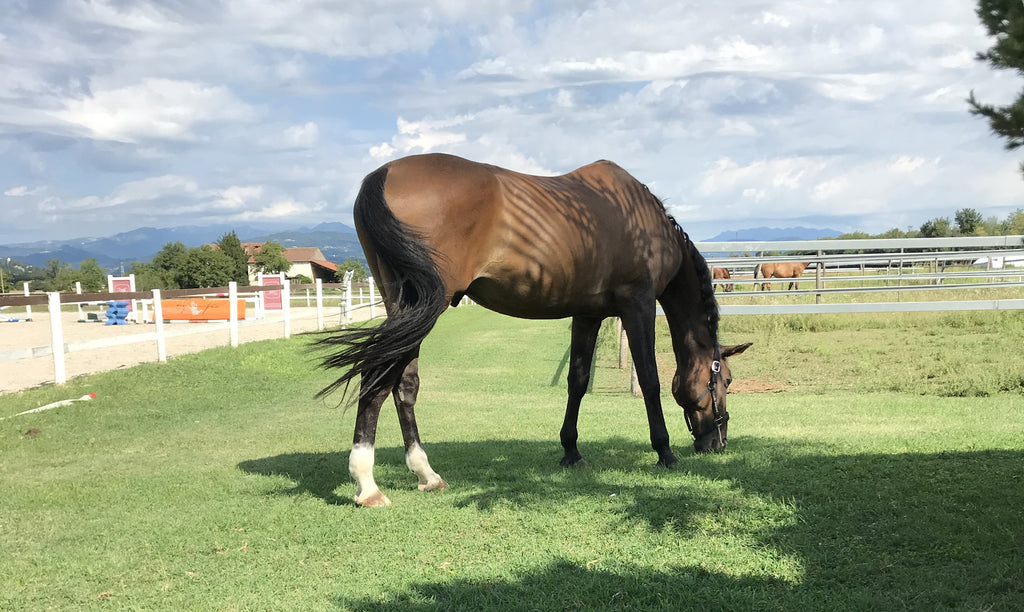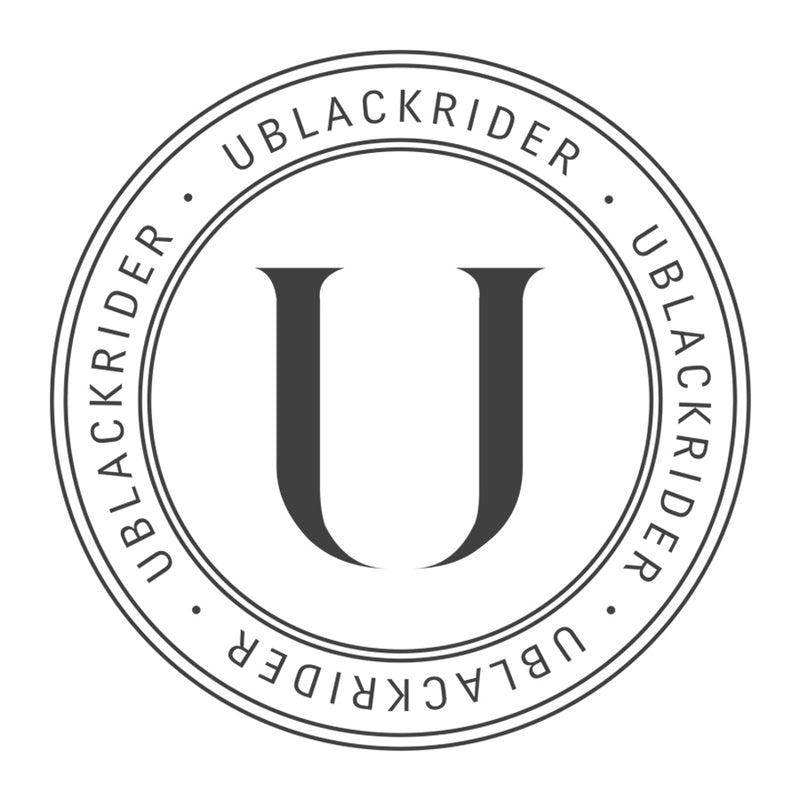In summer the watchword is: paddock

Summer means holidays, not just for us riders. In fact, with the arrival of the summer, the lifestyle habits of our equine friends also change and for the luckiest ones this translates into one word: PADDOCK.
Seeing your horse free while running, playing and rolling is certainly one of the most fascinating sights. You can spend hours, leaning against the fence, observing its evolutions. It is precisely in these moments that he demonstrates his maximum exuberance and transmits a priceless feeling of freedom and energy.
Unfortunately, however, even this magical moment can hide pitfalls. The main dangers to our horse's health are mainly represented by fences and the grass on which they feed: there may in fact be toxic plants or, in areas close to crops or industrial zones, dangerous concentrations of chemical products.
The fences
The best fences are those at least 150 cm high, enough to discourage the horse from the idea of jumping, made up of crossbars, the lowest of which is no more than 25 cm from the ground, a size such as to prevent it from slipping its hoof into it and remaining hooked and suffering abrasions and/or sprains in an attempt to free himself.
An excellent solution is also to have a hedge to repair the fence externally. This, in addition to its aesthetic function, will limit air currents by acting as a windbreak and will facilitate the growth of grass.
In the case of paddocks delimited by barbed wire or electrified wire, the latter must be made as visible as possible to the horse (for example by using colored construction tape). The danger, in this case, is not represented by the material of the fence itself but rather by being barely visible to the eyes of a horse speeding towards it.
Prevention of verminosis
Parasites commonly called worms are often found in the horse's intestine. Infestation usually occurs because the parasites, found in the excrement excreted by parasitized horses, are ingested by other horses that eat the contaminated grass.
To prevent this from happening, some simple precautions are necessary.
First of all, the administration of anthelmintic products at the same time to all the horses that frequent the pasture and the regular elimination of slugs in order to eliminate the underlying danger. It can also be deduced that it is advisable to avoid fertilizing paddocks with horse manure, even though the latter is an excellent quality fertilizer.
However, it is useful to let horses graze on the same land with cows or other animals such as sheep or goats. In fact, our equines cannot be attacked by the parasites of these animals and in this way mutual disinfestation is achieved.

Toxic plants
We all know that in nature there are some toxic or even poisonous plants that we know we need to stay away from. Like us, the horse is also subject to this risk. In fact, certain plants could be very dangerous if ingested and for this reason it is good to know the main "enemies" of our quadruped.
In general, it must be said, horses know how to independently recognize "bad" plants and if they have been used to feeding on the meadow since they were a foal, they will hardly eat them. Another matter for the horse used to living in the box and fed exclusively on feed. The latter, being inexperienced and not used to choosing their own food, is more exposed to the risk of ingesting toxic herbs. For these horses, in addition to the paddock, great attention must be paid when taking summer walks outside the riding stables. Here, the horses, finding themselves faced with an unexpected blessing, could pounce on any plant at their disposal, without too much attention, at the moment of a pause.
Naturally, the toxic effect of plants varies depending on the person who ingests them and in some cases also on the season and the soil in which the plant grows as in the case of Horsetail, whose toxic power is extremely variable.
The diagnosis of plant poisoning is quite difficult due to the fact that many symptoms appear clearly only in the most serious cases and only when it is too late to intervene as well as the symptoms vary greatly based on the toxic agent ingested.
For these reasons, although studies on the toxicity of plants for horses are not exhaustive, it is advisable to avoid leaving your subjects to graze in infested meadows and to keep them under control during trekking and walks. In the case of suspected poisoning, do not hesitate to call the vet urgently.
Pretty Woman
( Atropa belladonna) plant of the Solanaceae family and therefore related to the potato. Up to approximately 150 cm tall, widespread in shady woods under hedges. It flowers from June to September and its extremely toxic fruits come in the form of black berries with a diameter of approximately 1 cm.
The toxic agents are the alkaloids atropine, solanine and henbane which act mainly at the nervous system level.
Cicerchione
( Lathyrus latifolius ) widespread throughout Italy and also known by the name of meadow pea. They are other plants from 30 to 150 cm with purely summer flowering. Toxic substances are contained in the seeds and can give rise to nervous disorders that end with spasm of the laryngeal muscles and, in the most serious cases, with forms of paralysis.
Grass guitar
( Senecio jacobaea ) widespread in humid meadows and shady areas of northern Italy, they can reach 120 cm in height. The stems are erect, with strongly toothed leaves and flowers, from June to September, yellow with well-spaced petals.
There is an alkaloid in the leaves, which resists in dry and hay plants, which causes intoxication and damages the liver.

Aquiline fern
( Pteridium aquilinum ). Plants widespread in mountain regions where it is found in chestnut woods and high-altitude prairies. It contains a toxic substance that destroys thymine, i.e. vitamin B. This causes avitaminosis (vitamin B deficiency) which causes nervous disorders and abortion in pregnant mares. The same intoxication can occur from the ingestion of horsetail plants, more widespread in the Apennines.
Gittaione
( Agrostemma githago) once infesting wheat and oat fields is now quite rare. It is up to 100cm tall with solitary purple flowers that bloom between April and July. Only the seeds of this plant are poisonous and for this reason it can happen that during the threshing and harvesting of wheat and oats they end up being administered to the horse.
Let's fair
( Hyoscyamus niger ). Plants widespread throughout Italy on roadsides and abandoned walls, belonging to the Solanaceae family, 80 cm tall with large, hairy toothed leaves and light flowers with darker veins. They possess henbane, atropine and scopolamine, alkaloids with action on the nervous system.
Canine Mercorella
( Mercurialis perennis) is a plant of mountain woods, 40 cm tall with erect and linear stems and hairy leaves, they give off an unpleasant odor that attracts insects for pollination. They cause intoxication which manifests itself with a brownish color to the urine due to the presence of hemoglobin.
Oleander
( Nerium oleander) is a plant used to decorate gardens and green areas, evergreen with colorful flowers from May onwards. The poison present in the leaves and flowers of these plants acts at a cardiac level with an excitatory action on the heart muscles.
White clover
( Trifolium repens ) is a creeping plant up to 30 cm tall, widespread throughout Italy, it has a white band on the leaves that distinguishes it from other species. It is not directly toxic but in the leaves there is a substance which, combined with the enzymes of the horse's intestinal microorganisms, transforms into prussic acid, a lethal substance.
So in summer, the watchword is PADDOCK, but with a pinch of attention.
Marco Crestani
- Source 2008 Giunti Editore / The Horse and the Rider -
